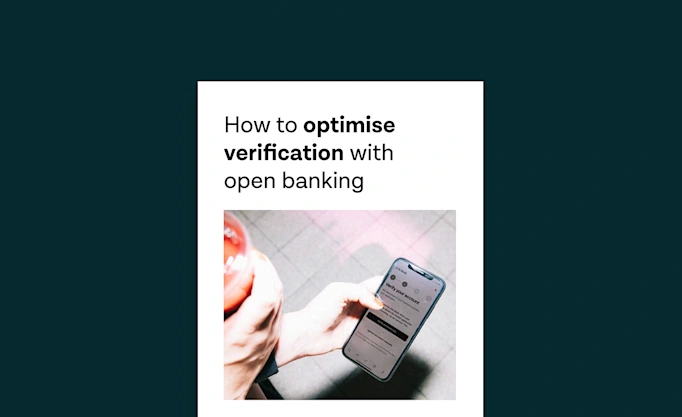Build your first app on the Tink Console

This is the third piece in our ‘Build with Tink’ series, where we are laying out you all you need to know to start building with Tink’s platform. Here we’ll go into how you can build and launch a service using the Tink Console.
By using the Tink Console, you can build and launch data-driven services in just hours. You can use the Console’s different features to access financial data and set up authentication journeys in 12 European markets – and then keep an eye on performance with analytics tools. Here’s how you can get started.
The Tink Console admin interface provides open access to our platform, letting any developer or business build and deliver personalised customer experiences. Here’s an overview of the features you can use to build and launch a service using Tink’s technology.
Getting started on the Console
After setting up your Console account, you’ll be guided to create an app with our three-step getting started checklist.
At this point, you may be wondering, what is an ‘app’? Essentially, a Console app is – in most cases – an add-on to your existing service. It establishes the access layer and data separation layer between your service and Tink’s platform.
Many of our customers maintain different apps for various different use cases and onboarding touchpoints, and are able to configure them separately depending on the context.
If you launch, say, an app that uses Tink’s account aggregation technology, your users will be able to connect to their bank account in a given market – and your Console app is where you’d manage your service’s interaction with the Tink API.

The getting started checklist helps you start building an app using account aggregation
Using aggregation to build a seamless KYC flow
To showcase how you can quickly get up and running with a new service, we’ve selected a concrete use case to use as an example: setting up an aggregation service to improve a Know Your Customer (KYC) flow.
Without diving into code-level detail (you can do that here), we’ll walk through the main steps involved in using account aggregation technology to power a KYC journey – with instant access to more than 2,500 banks through one API.

The Console dashboard
After you’ve created your app, you can start configuring it in ‘App settings’. This includes getting access to your API credentials so that your service can communicate with the Tink API (more on credentials here). Then you’ll be helped through the next step – making your first account aggregation with Tink Link.
Configuring & integrating Tink Link in your app
Tink Link is a front-end component that lets you provide a seamless authentication journey for users – allowing them to pick and connect to their bank from a list of financial providers. It’s essentially the backbone of many aggregation-based services, as it enables users to identify themselves in order to retrieve their account data.
Tink Link is implemented as a simple Software Development Kit (SDK), which we’ve made available with one line of code. Under the ‘Tink Link’tab under ‘Aggregation’, you can build your personal Tink Link URL using the authentication link wizard – which includes setting the specific market and language of the onboarding journey.

To activate Tink Link, you configure the language, market and data points you want to retrieve
If you don’t want to use real bank credentials, you can also try out an authentication flow by using test providers.
Here’s what a typical Tink-powered authentication journey looks like.

How customers authenticate with their bank through Tink Link
Working with the Tink API
After you’ve set up Tink Link, you need to make sure the Tink API becomes an integral part of your service.
The first step is to get familiar and prototype with the Tink REST API. This helps developers get a sense of the overall ‘flavour’ of our API. In other words, to see how our API responds to data requests and what type of information it provides.
You can do this effortlessly using Postman, a platform developers can use to build, test, and debug their APIs. After this initial prototyping step, you jump straight to building with Tink’s API documentation – and rolling out your service to customers.
Retrieving account data & launching your service
Once you have authenticated through Tink Link it’s easy to start retrieving transactional data using Tink’s REST APIs. You will need to fetch your access token (in the OAuth2 format), which enables your service to make API requests on your users’ behalf. (More on this step in our KYC guide, and in our dedicated developer portal).
The final step is to just fit the resulting data to your internal data model.
You’re now ready to start authenticating your users in a new and improved KYC process.
Monitoring & improving your app
After making your service available, it’s a good idea to keep an eye on user behaviour to understand how your app is performing. In the Tink Console under ‘Aggregation’ you will find ‘Usage reports’, where you can see a breakdown of the number of aggregation requests you’ve had, find out which markets your traffic is coming from and track spikes in activity.
In the context of KYC, you can check the stats to see how many users complete the signup or onboarding flows (and which financial providers they’re using).
Moreover, if you launch your service in new geographies (our platform is currently available in 12 countries), you can configure the access to financial providers – and ensure that the Tink API provides relevant data for any given market.

See the amount of aggregation requests in your service in the usage reports
Our KYC solution is of course just one example, but account aggregation can be used to power a range of services or use cases. If you have an idea – feel free to sign up and start experimenting with our tech.
In the next piece of this series, we take a close look at Tink Link– and how it can be used to deliver open banking-powered services to over 250 million consumers across Europe.
Missed the previous articles in the series? Check them out here:
→ Part 1: The Tink platform
→ Part 2: The Tink Console
More in Product

2025-02-06
6 min read
Introducing User Match: Built-in name verification to make security fast and easy
Discover how the latest feature of our verification products, User Match, is improving security by verifying users' names when adding bank accounts, reducing fraud and enhancing account protection.
Read more

2025-01-15
1 min read
Guide – How to optimise verification with open banking
Download our new account verification guide to learn how to streamline your operations, reduce risk, and enhance customer experience with the help of open banking-powered solutions.
Read more

2024-09-18
14 min read
Connecting the dots: how UX optimisations are driving success rates
We’ve previously explored small tweaks that get big results in open banking conversion rates. This deep dive drills further into how to reduce friction – and improve success rates through a fresh round of incremental changes in our UX.
Read more
Get started with Tink
Contact our team to learn more about what we can help you build – or create an account to get started right away.
